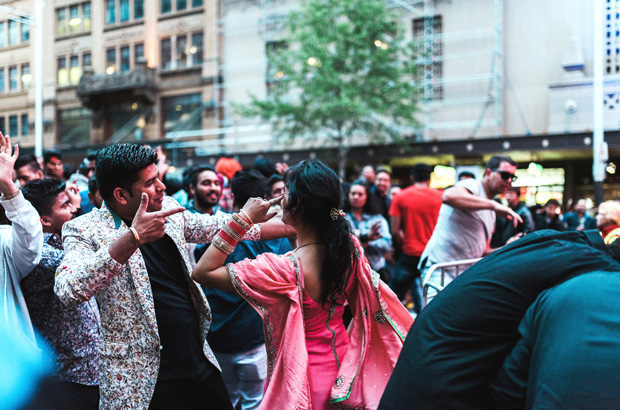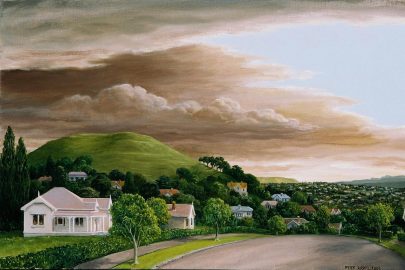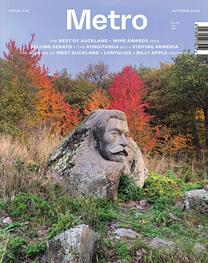Jan 7, 2016 Urban design
For the best and worst of Auckland, all in one place, look no further than the Waterview/Pt Chevalier interchange. Is this how we’re going to meet the challenges facing our city?
This article was first published in the December 2015 issue of Metro. Photos: Stephen Langdon, Josh Griggs, Jeremy Toth and Simon Young.
There’s something about a causeway. Crossing one, you’re in a different reality: on dry land while the world around you is floating, boats moored in the wind-whipped muddy tide, a sky of wheeling gulls and kite sails, all of it reminding you that things are not as they seem, that the ribbon of road you’re on allows merely an illusion of purpose.
Over the past few years, on the causeway into the city from the west, that ribbon has become a tangle. New motorway lanes twist and snake their way into the air, looping around and over and under each other, the land around them laid to waste, the long lines of cones and barriers whose purpose is to channel you but whose effect is to bewilder.
It’s the Waterview/Pt Chevalier interchange and it’s magnificent: an epic poem written in concrete and steel, too big to take in all at once and too complex to be understood just by driving through. It has, like all great works, the sense that it was created by minds greater than our own.
It is mighty and it is beautiful, and we should count it as some kind of triumph that we turn the skill and creative vision that made it, not outwards to conquest and war, but inwards, to the task of building ourselves a better city. The engineers and their software developers must be, and should be, very proud.
It’s also a fucking road.
The Waterview interchange joins the Northwestern Motorway to the airport motorway and is a key component in the ring road around the city, a dream of city planners for more than 50 years (it’s a half-ring, really, because no one’s proposing a flyover past Rangitoto, but we’ll let that pass). When it’s done, you’ll be able to take a speedy modern highway from Albany to the airport; from Mangere to Massey; from Western Springs to Wiri. Right?
Actually, at busy times, wrong. If this new road is as appealing as its planners hope, it will quickly become as clogged as all the other motorways. Already, it has forced the widening of long stretches of the Northwestern Motorway, and after that there will be more widening, and more, and more. And even so, to keep costs down, they haven’t added a dedicated busway.
The best of Auckland, and the worst, are both right there at that interchange. We can build magnificent things, so we do. But we do it in the service of existing behaviours. We’re good at wanting more of what we’ve got; not so good at rethinking how we might live, and therefore what we might want instead. Not so good at grasping the potential for living better kinds of lives.
This is not a rant against roads. The city needs efficient roads; of course it does. But the way to make them efficient is not to build more of them. It’s to make not using the car the preferred choice for lots of us, lots of the time.
Carry more freight by rail. Get the kids back to walking and cycling to school. Design public transport that’s cheaper, more reliable and more fun to use. Create more cycling and walking routes in and around the city that reconnect us to its beauty and its liveliness. Make the costs of driving, including parking, such that driving becomes the choice born of necessity, not the default we fall back on through unplanned habit.
If we do all that, we will indeed free up the roads. The people who need to use them — which is most of us some of the time but doesn’t have to be most of us most of the time — will find them more efficient, and safer too.
And it won’t just be for transport efficiency. We’ll be healthier. We’ll have more time to relax or work or whatever — which is what happens on a train or bus. We’ll be more connected to our city and the pleasures it affords — which is what happens when you walk or ride a bike. We’ll start to unlock a whole host of other ways to make the city even better to live in — which is because good ideas work like chain reactions. And, yes, we’ll be helping to mitigate climate change.
Both the government and the Auckland Council have a policy on this that sounds reasonable: it’s to “develop all transport modes”. But it’s wrongheaded.
Every road made bigger disadvantages its alternatives. Every time we add a new motorway lane, we’re telling ourselves to keep believing it’s easier to use the car, even when it isn’t. We’re telling ourselves it’s okay, there’s really no need to walk or ride or take the train.
Which creates an unvirtuous circle. When public transport is underused, the planners don’t put on more trains and buses; but when the trains and buses don’t run frequently enough, we can’t rely on them so we find it harder to use them.
It’s really not easy, shifting a city from one behaviour to another, because supply and demand are chicken and egg: neither and both come first.
And yet, the beauty of it in Auckland is that demand grows anyway. The Park & Ride car parks for the Northern Busway are bursting. Rush-hour buses coming from the west frequently hit the inner suburbs with Bus Full signs up. By 2018, at current rates of patronage, Britomart railway station will be turning away commuters. That’s really, really soon.
So we need more services, and we need, in particular, speedy progress on the City Rail Link (CRL), the underground line that will link Britomart with the middle of town, Karangahape Rd and round to the Western Line.
It’s not “Len Brown’s train set”, as some spectacularly ignorant newspaper leader writers continue to call it. In fact, among planners and nearly all politicians on the right as on the left, at local and national level, there is a consensus. They agree the CRL is needed, primarily because it will increase the frequency and speed up the commute times of services from the middle and outer suburbs, and that will be good for the city. The only debate is over how soon the government funding will kick in.
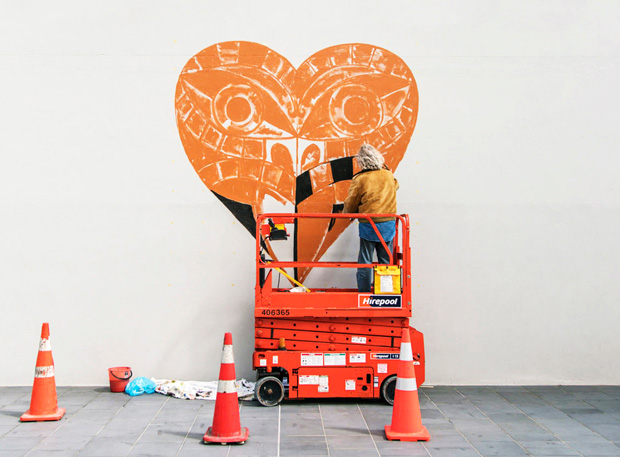
It’s not easy being a nimby — being in support of a general plan provided it’s Not In My Back Yard. You’re constantly on the back foot, having to defend yourself against charges that you’re subverting the noble plans of the city with your selfishness. But what is nimbyism but a desire to keep one’s own home from being spoiled? We’re all nimbys, aren’t we?
With a council election looming next year, the biggest problem facing Auckland is the question of how to keep rethinking the future of the city in a way that builds much wider public support than we have to date, and does not simply bring out the nimby in each of us.
We need political leaders who are strong enough to generate public support for a vision. Who can create a climate in which we all get more excited about the possibilities. And who are also smart enough to develop specific strategies to win support from people who feel their way of life is under threat.
It’s the central task for the next mayor, whoever that is, and it won’t be easy. In Herne Bay, some of the locals continue to oppose the SkyPath walking and cycling route over the harbour bridge, yet it’s hard to see they have any reason beyond a fear that strangers might park in and walk along their streets. There’s no obvious answer to that.
In other leafy suburbs, the Auckland 2040 group is currently trying to whip up fears that their lovely villas are going to be bulldozed to make way for multi-storey apartment blocks.
In fact, on the whole, these are suburbs that already have a lot of town houses and apartment blocks, and the provision of more will appeal to many locals when they reach the age of giving up the family home but not wanting to leave the part of town they know and love.
Well-designed apartments will enhance those suburbs, giving them the population base for more services and shopping options, making them safer, and making them more demographically mixed, which will increase the likelihood of children living there.
Sadly, while the need is for political leadership that wins people to the prospect of a better city, the likelihood is that too many candidates are likely to indulge in either fearmongering or anodyne blather. Centre-left candidate Phil Goff’s commitment to “not touch the leafy suburbs” is a curious amalgam of the two.
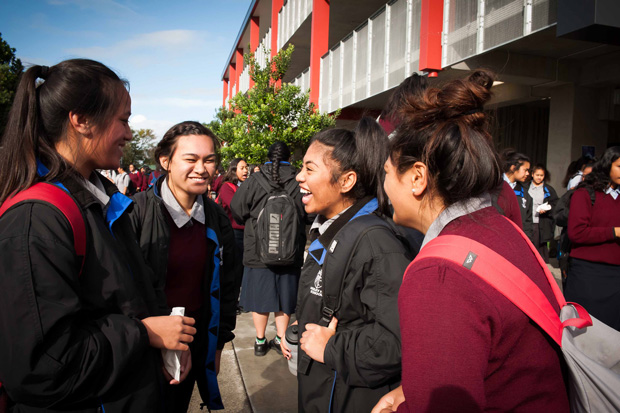
Everybody knows change is upon us, although sometimes it seems we put that knowledge to one side when we want to complain. The rail tunnel and the apartment block plans are not happening because the mayor is an idiot or because he has some fiendish plot to ruin our lives, although if you believed much of the criticism he gets, you’d think both things must be true.
They’re happening because this is the city we live in now. It’s different, and not just in the obvious ways of being bigger, more culturally diverse and closer to capacity use of its infrastructure.
Some of the differences don’t get talked about much and yet their impact will be, or has already been, profound.
Take the status of many of our major companies: they’re branches of foreign firms. That’s helped Auckland with an inflow of capital and expertise, but it hurts us, too, because business decision-making is not done here. CEOs have become branch managers; boards are permanently elsewhere, or answerable to elsewhere.
Another change: almost all the population growth predicted for New Zealand will happen in this city. Much of it is due to immigration, but another key factor is life expectancy. Statistics New Zealand says children born today can expect to live into their 90s; some say they will live much longer than that.
Another: systemic failure in poor schools. As Kirsty Johnston has revealed in an excellent recent series in the Herald, too many of the most disadvantaged children in Auckland attend schools that are simply not able to meet their educational and pastoral needs. With all sources of income taken into account, decile 1 schools have $1000 less per student to spend than decile 10 schools, and yet the decile 1 schools need more help, not less.
It’s not consistent, and there are many examples of outstanding success. At decile 1 McAuley High School in Otahuhu, as we have reported often (see July 2015), they achieve academic success that would make a decile 7 school proud. Elsewhere, though, too often the programmes that make a difference are shut down for lack of funding and the teachers and principals who make a difference leave in despair at the lack of support.
It’s wrong to blame the schools for everything, or to expect them to fix everything. But it’s not wrong to see them as offering a central opportunity to make a difference in the lives of children. Political leaders on all sides know this, and do far too little about it.
Change is also coming because there is a fast-growing gap between the supply and demand of decent, affordable housing. If children don’t live in a warm, dry home, everything else that is done for them is put at risk. Politicians know this, too, and yet, still, scandalously little is done. Auckland’s Special Housing Areas, which allow a fast-tracked consent process and which both central and local government like to call a success, have not even dented the problem.
It’s not controversial to note that a society needs cohesion to function well. People who don’t share any of its goals are unlikely to share its values either. It’s a tragedy in Auckland that while we are creating so much that is so exciting, we are also leaving far too many citizens behind.
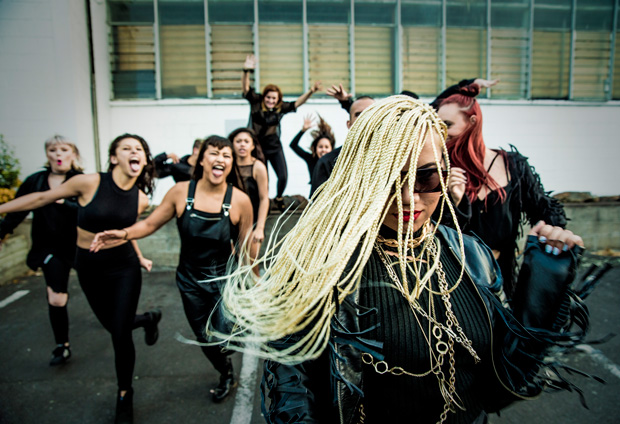
And that’s not the half of it. Auckland, like the country and the world, will soon confront a profoundly disruptive threat: the potential collapse of employment.
Manufacturing jobs have been disappearing overseas for decades. And yet in the exact same way China took New Zealand jobs, countries like Burma and Vietnam are now taking China’s. And even as that’s happening, automation is also taking a massive toll.
Driverless cars are a consumer-oriented manifestation of something that manufacturing industries are already very familiar with: driverless machines. Service industries, too, as anyone who still has a job in banking or postal delivery knows. How long before cafes decide to do without baristas?
Another change: the Waitemata port, handling containers, cars and other mixed goods, has a limited efficient life on its present site, whatever the vested interests who want to keep it there say (see Metro, September 2015). Shifting it will be disruptive, but also very productive.
And more changes: those driverless cars, medical care, the changes to how we get our news and entertainment, the implications for informed democratic life that all of these things carry.
This is not life as it was. The changes we’re now facing to work, transport, information delivery, demographics and, in time, the impacts of climate change will not be mere refinements to a settled way of life.
They will be profoundly disruptive and will turn the place we live into a very different city. And they are starting to happen without our having any real strategic plan, or even much open debate.
This in itself is qualitatively different from the past. In the 1970s, there were big social changes in New Zealand, and the 1980s followed with enormous economic changes. There were more in the 1990s, and more again in the 2000s. In every one of those decades, the prevailing government of the time was committed to future-focused reform. Governments of the left and right took seriously their duty to do their best to equip us for the future.
That doesn’t happen now, for one very simple reason: there are no votes in it.
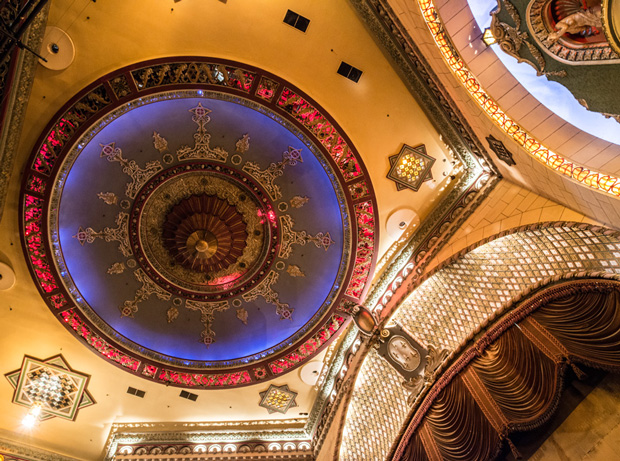
We’re not going back. Not to the days of large sections close to the city. This is not because the council is going to put up apartment blocks on them all. It’s because, for cost reasons, large sections will no longer define our idea of what a decent home in Auckland looks like.
And it’s because many of the people who currently own those large sections will, over time, sell them to developers, who will build a range of apartments and town houses. Or, who knows — if you own such a property in, say, Mt Eden, you might do a deal so you’ll own one of the new units yourself and your son or daughter will move their family into another.
Existing home owners in the leafy suburbs will have so many ways to benefit from the denser housing regulations.
Nor are we going back to the days when Auckland was simply white and brown. And especially not to the days when, whichever side of that divide you were on, clustered on the Waitemata or the Manukau, it was the only one you knew.
Auckland has become a city with bicultural foundations and a vigorous multicultural makeup. Diversity has happened here because it’s happening everywhere, and the rush of ethnic integration will continue, here and everywhere, for as long as it’s possible to foresee. That’s what the world is, now, and we’re going to be the better for it, however deep the anxieties run at present.
We’re not going back to the old idea of a city. The CBD that bustles by day and is empty at night, the dormitory suburbs scattered around, the big industrial zones we try to keep out of sight and mind.
The CBD has become the central-city precinct in lots of ways, including residential and for entertainment. The suburbs hum with life and there are big, fast-growing town centres, too. We shop in malls and big-box complexes, but small shops have also fought their way back.
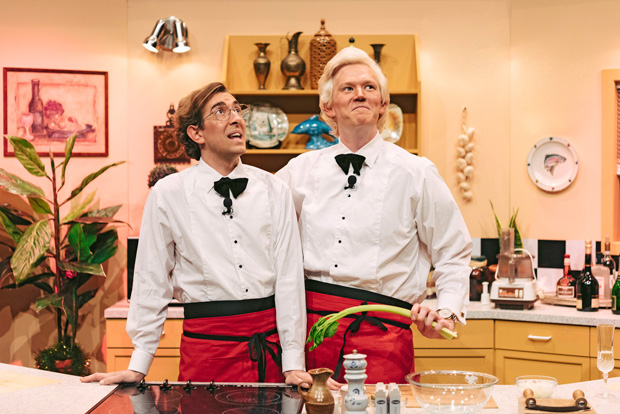
Auckland offers choices, and it’s on the way to offering more, to truly becoming a city where people can choose to live where and how they want: in the centre or on the edge, or in a suburb rideably or walkably close to a town centre, or perhaps on some beautiful coastline connected by a ferry. Where you can drive, but you won’t always need or want to.
And our communities will be more mixed, because in every place where they emerge, mixed communities thrive.
That’s the real secret of this city, the real prospect for our future delight. To be a city where children and the elderly, and everyone in between, can live in close proximity. Where all of us can gain succour from our cultural roots — and rely on the strength that gives us to embrace the challenges and enjoy the rewards of living
among others.
We can relish the prospect of all this, and for most of us, if we’re honest, we know we will be at least a little frightened of it, too.
But all those changes, they’re going to happen anyway. Will we use them to make a wonderful city?

